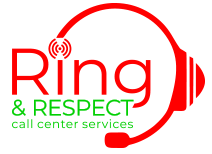How The Future Of The Call Center Industry Is A Flat World.
The old call center model is dead and now smells like old fish to the staff, owners and clients. Call centers worldwide had major disruptions due to Covid-19 and Governments worldwide are now constructing new regulations and laws to require call centers and most businesses too socially distance the staff within the building. This will create more disruption in extra expenses for those brick and mortar businesses.
Yet the work still has to be completed and that has driven most BPO’s to a Work From Home or WFH program. The brick and mortar businesses will also exchange many staff to the WFH model to reduce costs. But they will not be able to overcome the brick and mortar mentality that most companies have. Many small business worldwide own the building they are housed in. This has been a great model prior to 2020 but not is more like an anchor holding the business owners to the brick and mortar model.
Now that we are familiar with the WFH model it will gain popularity worldwide even after the pandemic is over. With so many people working from home now worldwide the culture will mature for many reasons. The brick and mortar models will have to allow some staff to WFH or expand the square footage of the brick and mortar. Many small companies will move to a complete WFH strategy to help with startup costs and some new businesses will be started just because WFH is now conventional. All of this will lead to the growth of the WFH model over the next 10 years or maybe forever.
What are the challenges of the WFH model? Well there are many issues with management and interactions, but most can be reduced by video chat, instant messaging and social media. There are also security challenges but most can be overcome with more technology but that adds costs to the WFH strategy. In truth the biggest costs for the WFH model is technology.
How do we overcome the disruption of normal business call center models? How do we create the new normal? First let’s look at other industries and businesses that have transformed how we get a taxi, drink water and sell nick-knacks. If your old enough you remember there used to be water fountains in most public places like schools and businesses and if ask at that time “Would you pay for water in a bottle” you would say “Why it’s free everywhere”. Yet now Americans buy 14 Billion bottles of water annually.
Etsy is another example; people use the website to get their small online store seen by more possible customers. They use the platform to push users to their products but the small business is in charge of its products, look and pricing. This is another example of a flat business model.
Uber is a better example to the call cenetr industry as it flattened the staffing model of the transportation industry by allowing the company to provide the clients and the staff to provide everything else on a commission-based model. This is often called the sharing economy model. The staff own and maintain the equipment and the company just provides support by the app and payment options.
What if we take a sharing economy model and apply it to the call center industry? If we bring on call center staff who have an internet connection, computer and camera feed, then they are like our Uber drivers. After you bring in the Uber drivers the next step is to train or certify them, so we do the same in the call center industry. Now you have the certified staff with equipment all that is needed is the technology and of course the client. So, the sharing economy model can work for the call center industry but what are the challenges?
Management, motivation and social interactions will be the biggest challenges in the sharing economy model and the WFH model in general. So how do we keep the staff engaged or better yet how do we create self-engaged staff? How do we get the staff to not only be part of the network of agents but part of a family, a team?
This is where it gets interesting. Ring & Respect has created a way to create teams within the company that have ties to each other. We are hiring and certifying staff and then asking them to help us find 10 more employees and work with them to certify and begin a project that matches the agent. Just like Uber has staff with different equipment and drivers with different skills. Uber Black and Uber XL providers are certified differently and have different costs to the user. We match the staff to the client just like Uber does with Black and XL.
Here is the twist, once the certified staff member has 10 people hired and certified they will get a piece of the 10 staffs’ revenue. The team leader who helped hire and train the staff will make money off the staff as long as the staff perform at high quality levels. Now you have a cheerleader for every 10 staff someone to help keep them stay motivated, a small social group inside a bigger one.
With all the employees aligned towards the same goals the business runs much easier. We have so many morale officers for free we will have a very motivated staff. And the deeper the teams go the deeper the morale will grow, and more success staff have with teams the better the quality of work will be. Because it’s a performance payout everyone will be trying to make the others perform at the highest levels.
The sharing economy model also provides quality to the clients of the call centers. They get motivated, certified staff that meet their needs, in fact staff that is matched to their needs like a dating service. These staff all have multiple cheerleaders and are very focused on quality. The results are improved quality, motivated staff and a great culture of sharing.
The future is a flat world of staffing, a sharing economy.
Be Safe.



